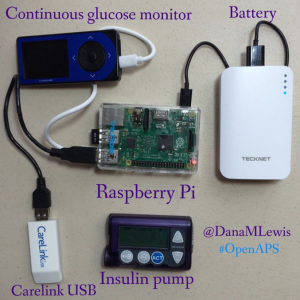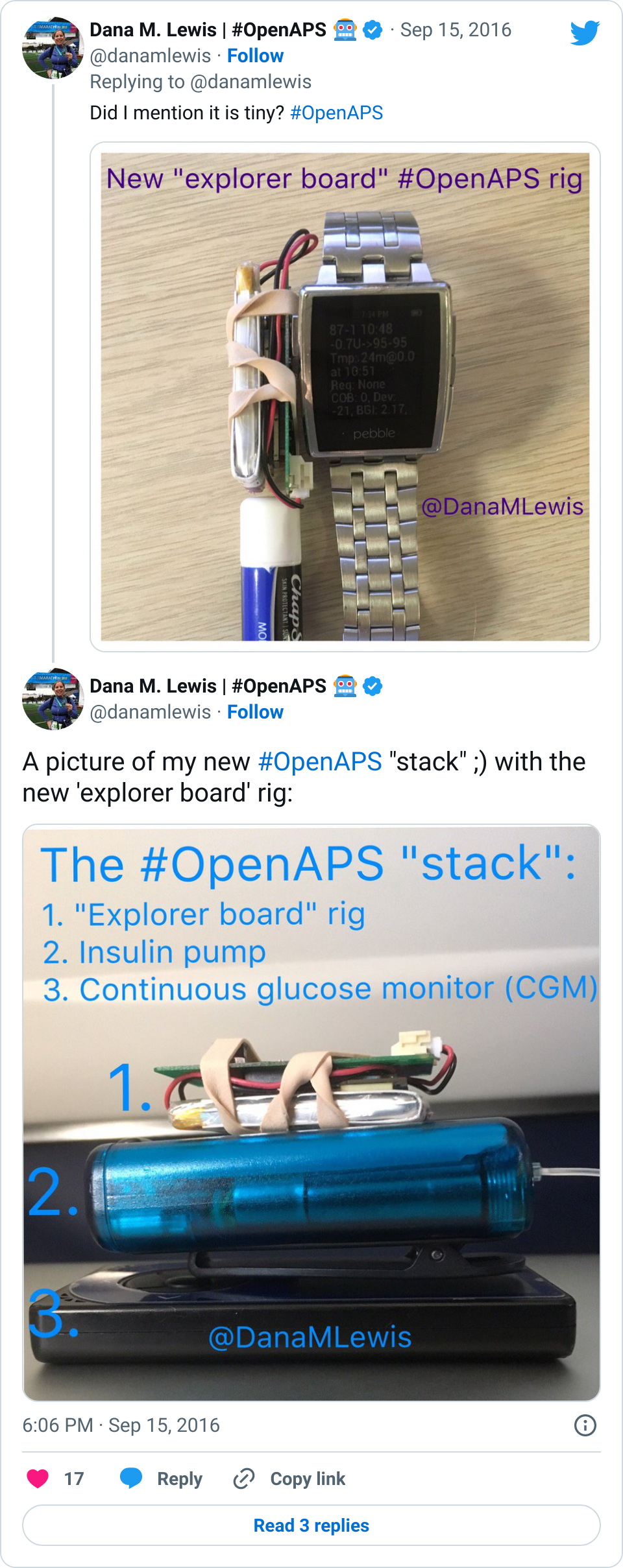My newest #OpenAPS rig is roughly the size of two sticks of Chapstick.

Think about that, especially in context of my earliest rig of a Raspberry Pi, Carelink stick, battery with enough power to last a full 12 hour day (or more), and the bulk that it added to my bag. I was happy to carry it, but once Oskar started working on a smaller rig with better range, for many people it was a game changer!

And now we have another option with a new open source hardware board called the “915MHz Edison Explorer Board“. It’s a board designed to hold an Intel Edison (the ‘mini computer’), and it also has a 900MHz antenna on it – which means we can use it to talk to the insulin pump. This eliminates the need for a separate ‘radio stick’ – like the Carelink or a TI or similar. This is a huge improvement!
What carrying the new rig looks like:
This is what a full rig setup looks like:
- Insulin pump
- CGM
- Explorer Board rig

…and that’s all that’s strictly required. You can use openxshareble to read BG data from the receiver directly, but that’s currently the flakiest part of my setup, so I still recommending hotspotting your phone to pull BG data down from the cloud – and more importantly, so you can use Nightscout or similar to visualize what the loop is doing.
So, today’s post is about the new, shiny, smaller rig, and I know everyone wants to know how to get the parts to build their own!
**Update** – You can order an Explorer Board here. . Keep in mind Edison and battery are not included, so if you don’t already have an Edison, you’ll want to order one of those, too.
Improved #OpenAPS docs in the works, too!
Also, stay tuned – we have a new setup script and guide being developed and tested to streamline the setup of an OpenAPS implementation using this board or any of the previous hardware. These new docs will streamline the installation and configuration of the components required for anyone to build a new OpenAPS implementation for themselves, so they can more easily focus on testing the algorithm and decision making process that’s a critical part of DIY looping.
Can’t wait for this board to be available. LOVING the PI solution, but for sure it’s footprint is big (especially because of the external power needs). This looks AMAZING, frankly smaller than needed, but smaller is definitely better for this stuff. Just to get the kit to a PI case alone is would be amazing, let alone smaller than the pump!
How long is the lipo battery holding out in this setup – would a little bigger lipo be a good idea or is that size plenty for a long day?
With similar Edison rigs we’ve found that 2000mAh lipo’s are a good size for all-day use. We haven’t tested these 800mAh ones in real-world use yet, but suspect they’d only last about 8 hours.
Good Morning,
Starting to build an Edison rig and was wondering if anyone would have recommendations for a pebble watch.
Should I use CGM in the cloud (FB) for this general type of question.
Thanks
John
Whatever Pebble you can get should work. Yes, CGMitC or CGMitC off-topic groups are great resources for general Nightscout and non-looping related stuff. There is also a Looped group for looping stuff, and Gitter etc.